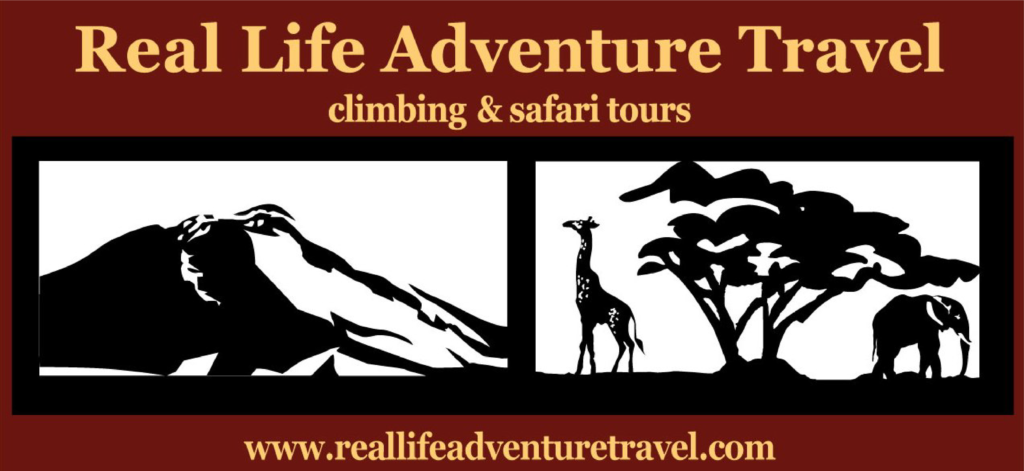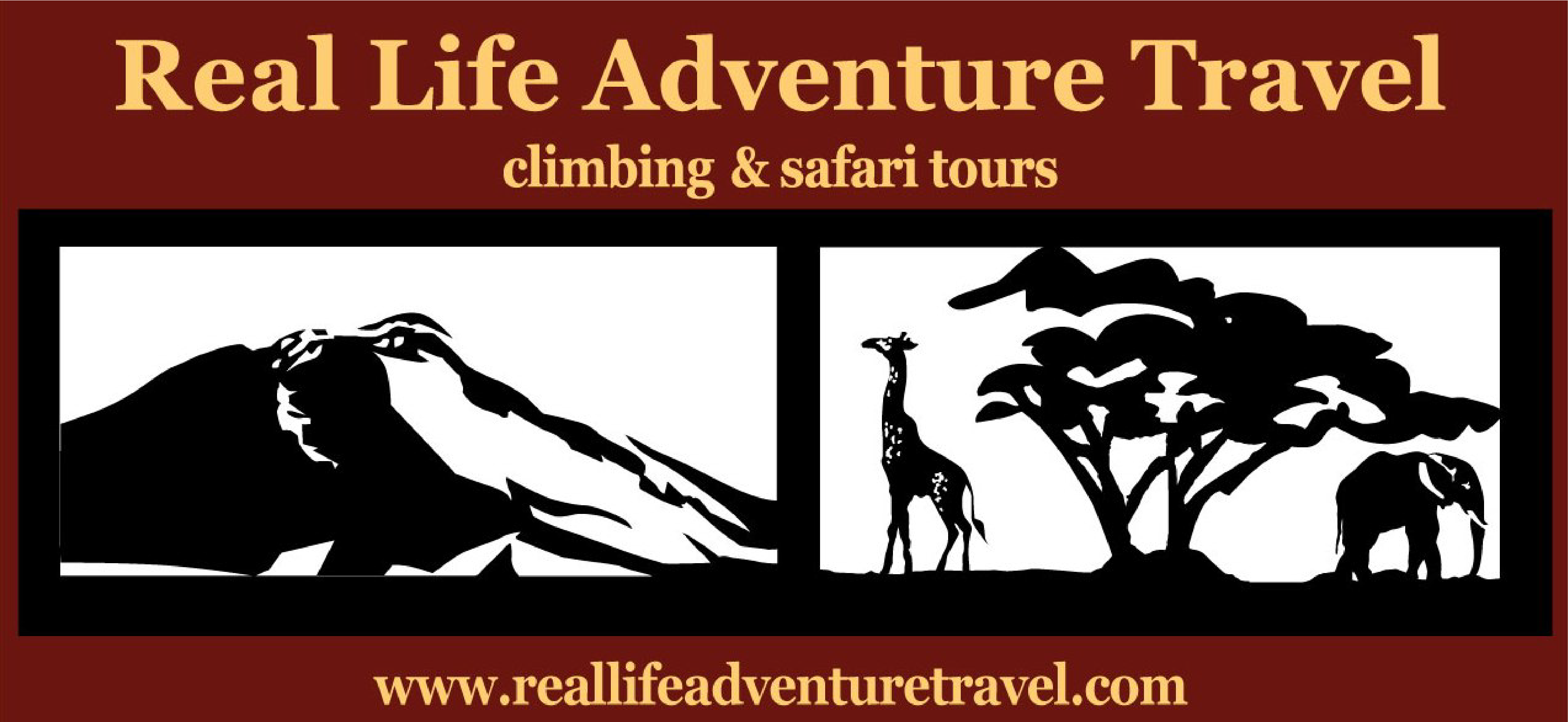Tanzania Family Safaris
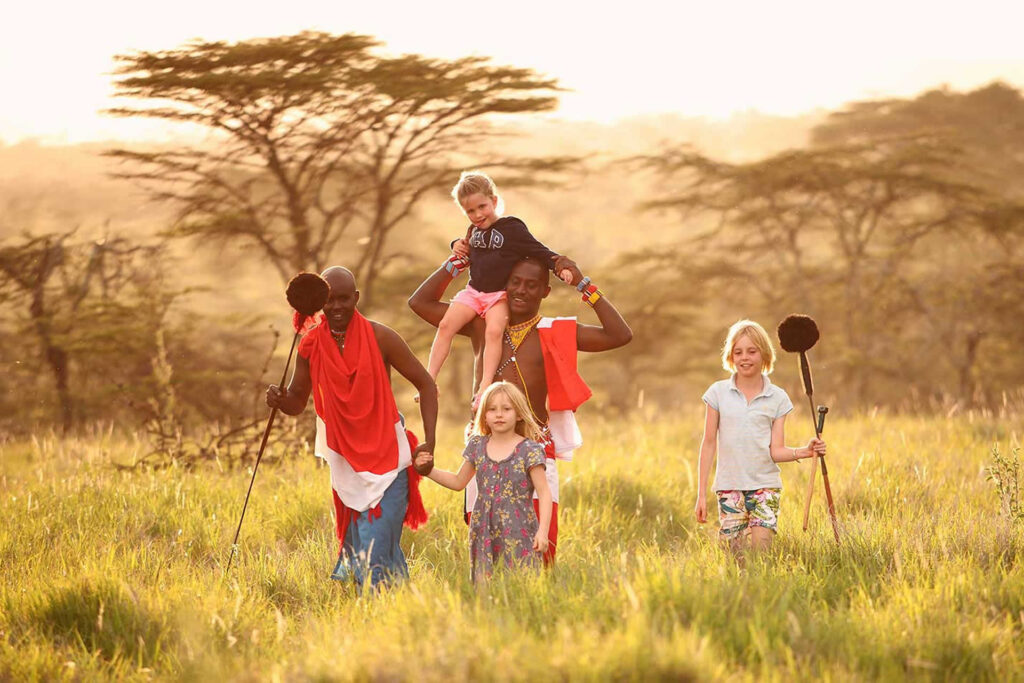
A family vacation getaway A Tanzania Family Safari is an excellent holiday plan for those who want to make their partners and kids happy. Tanzania offers an abundance of wildlife for you and your family to enjoy, and we are here to ensure that your journey to the wilderness meets you and your family’s expectations. The Northern Circuit makes for an exciting destination for game drives and our Family Safari Packages offer competitive prices, especially for larger groups. You and your family will get to enjoy comfortable Safari Vehicles with expert drivers and guides who will cater to all of your Family’s needs. You and your family will also get to enjoy comfortable and relaxing accommodation facilities with various amenities such as those with family rooms, interconnecting rooms, swimming pools, larger communal areas, and more. For added flexibility, we also offer private activities for families, and a safari can be combined with a beach break in Zanzibar. Top family safari destinations Ngorongoro crater The views from the Crater rim are sure to have you and your little ones gasping with awe. Well worth a visit for the scenic vistas alone, the Crater is also steeped in history, so the kids can enjoy a little learning as you cruise along the caldera floor. Serengeti NAtional park From witnessing the Great Migration to catching sight of the big cats that follow the herds, you and your children will be mesmerized by this national park every time you set off on a traditional game drive! The Selous Game Reserve Selous is a watery world filled with palm trees, boat cruises, and of course some wonderful wildlife. This reserve is perfect for a quieter family safari! Zanzibar Island You can’t beat family time spent on the beach, and that’s why we recommend a few days’ post-safari along the white sandy beaches of Zanzibar! Related Articles Safari Itineraries Related Articles Safari Itineraties
Tanzania Walking Safaris
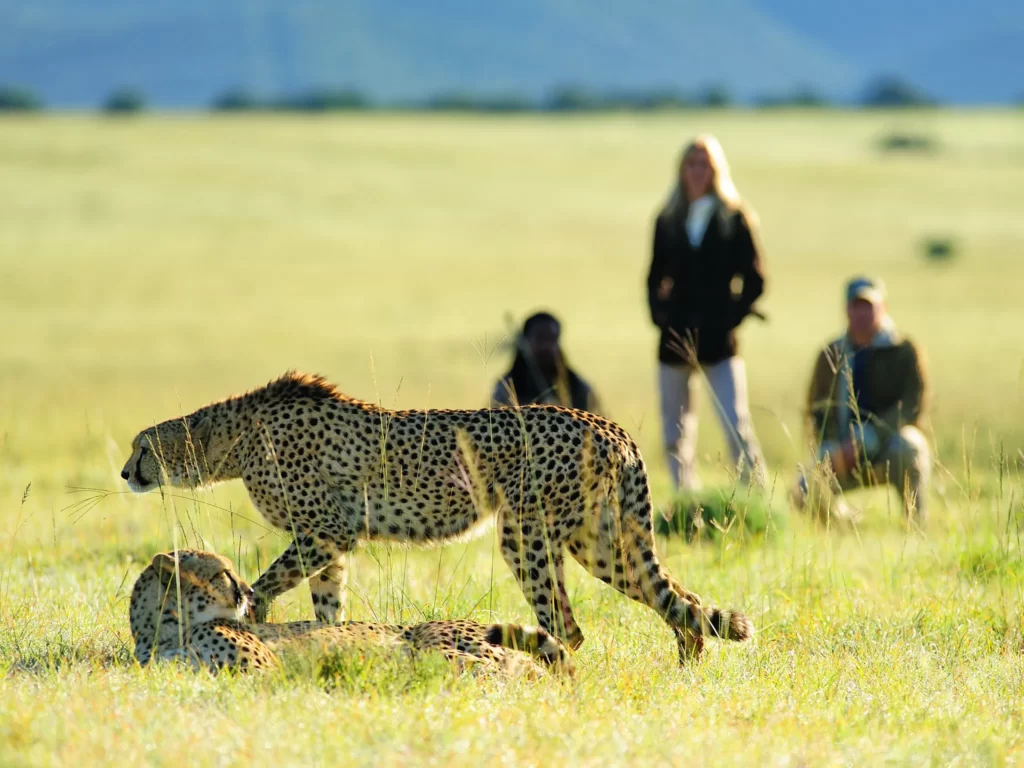
Journey Through The Wilderness Walking safaris are the purest form of safari. Walking in Tanzania is completely different to game driving. On foot you are a participant in the world of wildlife rather than a spectator, a thrilling and unbeatable safari experience. Walking is only available in certain areas and can be short day walks back to the same camp or can be mobile where the crew pack up your camp and move it for you – greeting you at the end of your day’s walking journey with sundowners. Trekking is the next level of wild where you backpack through the wilderness and camp in a new location each night. Tents are lightweight, the team is very few so the focus is on immersion, getting stuck-in and wilderness rather than luxury. Get Up Close & Personal Walk in the most spectacular scenery in Africa This scenic walking safari takes place in the Ngorongoro Conservation area with the largest unbroken caldera in the world; the breathtaking Ngorongoro Crater. Walk the Serengeti plains on an amazing safari experience Explore the Serengeti on foot. Get closer to nature than ever before. Discover undisturbed wildlife and enjoy the serenity of the environment on a beautiful walking safari in the Serengeti. Tarangire National Park Walking Safari A combination of Maasai encounters and secret sleeping vantage points to watch elephants in the full moon. Tarangire National Park features the largest concentration of wildlife in Tanzania that remains in the park throughout the year. Related Articles Safari Itineraries Related Articles Safari Itineraties
Private/Custom Itineraries
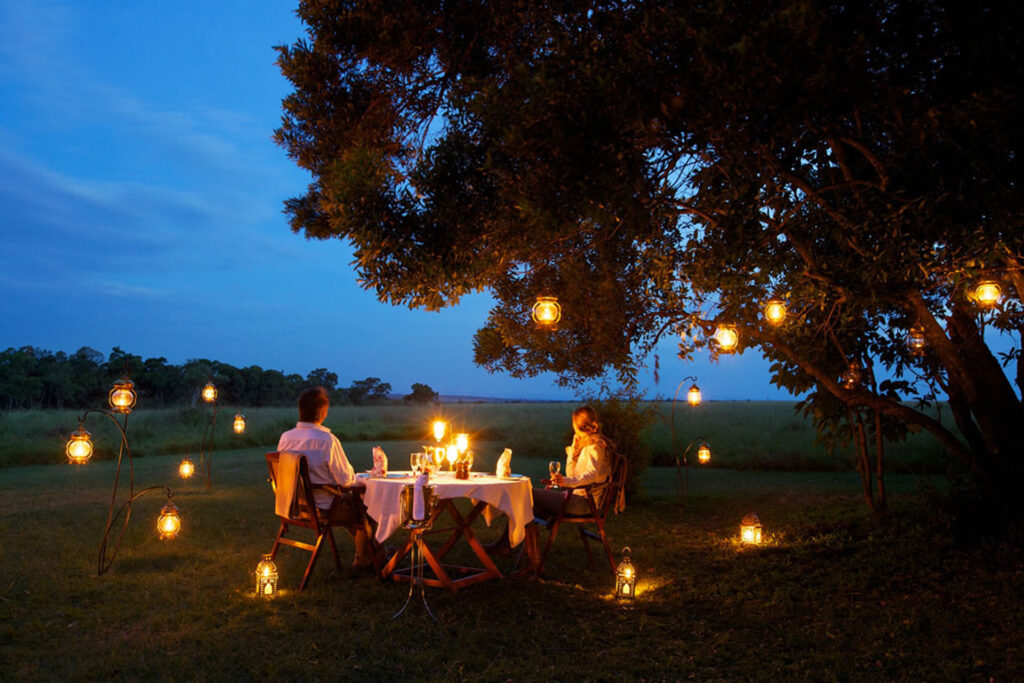
The Greatest Show on Earth The Great Wildebeest Migration in the Serengeti is the largest movement of wild animals in the world, involving about 1.5 million wildebeests, zebras, elands, and gazelles. This migration is listed as one of the world’s eight natural wonders and is an exceptional inspiration for a dream nature tour of northern Tanzania. The migration starts around March and April when the animals leave their calving grounds in the southern Serengeti and head towards the next water source. They trek via the south-central Seronera outskirts into the Western Corridor and Grumeti River, where they stay until June, before heading to the Masai Mara National Reserve in Kenya around July or August. They return via the same river from October to November and continue back to the southern Ndutu calving grounds, where they arrive around December and reside temporarily until March. The migration attracts a trailing retinue of predators, making it an exciting spectacle for nature enthusiasts. Best Time to Witness the Migration The best time to witness the great wildebeest migration in Serengeti, Tanzania is generally from June to August when the wildebeest are crossing the Mara River into the Masai Mara National Reserve in Kenya. However, the timing can vary depending on the rains and the location of the herds. The migration typically starts in January and February when the wildebeest give birth to their young in the southern Serengeti, and they begin to move towards the western and northern parts of the Serengeti in search of fresh grazing. The migration then heads back towards the south from October to November. Therefore, the best time to witness the migration in Serengeti, Tanzania may depend on which part of the migration you want to witness. A Map of the Wildebeest Migration Related Articles Safari Itineraries Related Articles Safari Itineraties
Serengeti Migration Safari
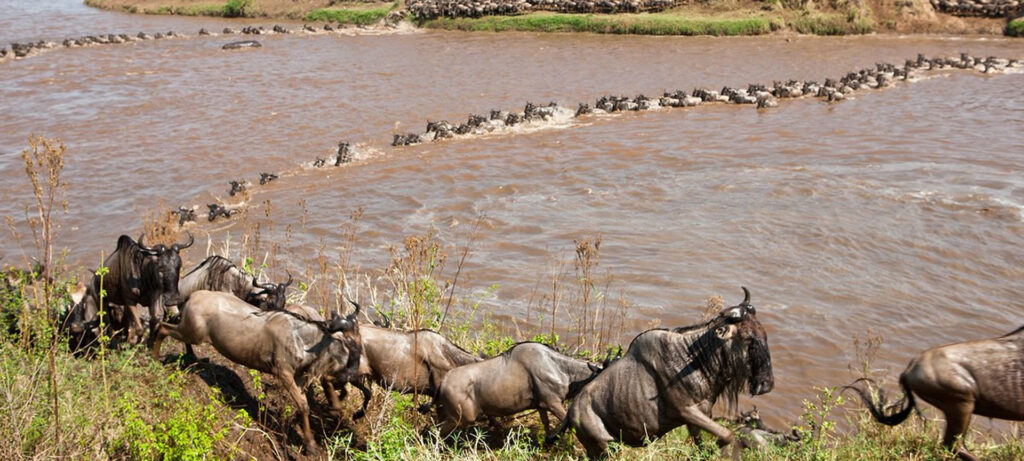
The Greatest Show on Earth The Great Wildebeest Migration in the Serengeti is the largest movement of wild animals in the world, involving about 1.5 million wildebeests, zebras, elands, and gazelles. This migration is listed as one of the world’s eight natural wonders and is an exceptional inspiration for a dream nature tour of northern Tanzania. The migration starts around March and April when the animals leave their calving grounds in the southern Serengeti and head towards the next water source. They trek via the south-central Seronera outskirts into the Western Corridor and Grumeti River, where they stay until June, before heading to the Masai Mara National Reserve in Kenya around July or August. They return via the same river from October to November and continue back to the southern Ndutu calving grounds, where they arrive around December and reside temporarily until March. The migration attracts a trailing retinue of predators, making it an exciting spectacle for nature enthusiasts. Best Time to Witness the Migration The best time to witness the great wildebeest migration in Serengeti, Tanzania is generally from June to August when the wildebeest are crossing the Mara River into the Masai Mara National Reserve in Kenya. However, the timing can vary depending on the rains and the location of the herds. The migration typically starts in January and February when the wildebeest give birth to their young in the southern Serengeti, and they begin to move towards the western and northern parts of the Serengeti in search of fresh grazing. The migration then heads back towards the south from October to November. Therefore, the best time to witness the migration in Serengeti, Tanzania may depend on which part of the migration you want to witness. A Map of the Wildebeest Migration Related Articles Safari Itineraries Related Articles Safari Itineraties
Mount Kilimanjaro Food Menu
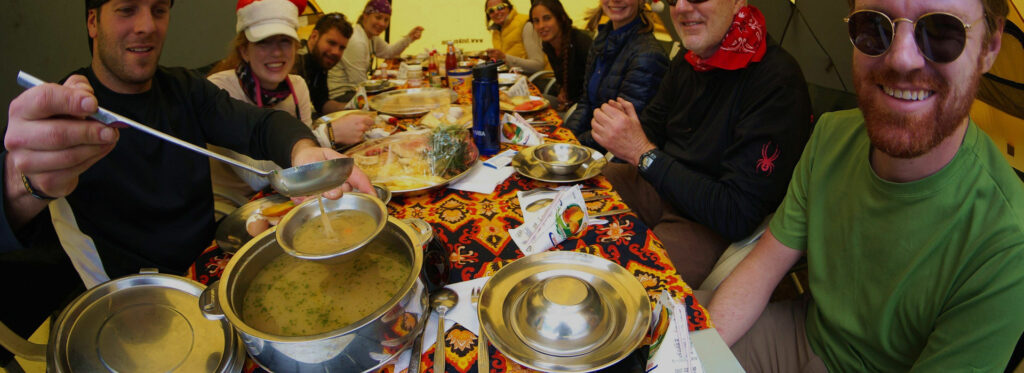
Fueling Your Kilimanjaro Climb Climbing mount Kilimanjaro is one of the most unforgettable adventures one can ever have, but to achieve the summit, you need to ensure that your body is fueled with the right nutrients. That’s why the food menu on Mount Kilimanjaro is an important issue to discuss before you begin your climb. At Real Life Adventure Travel, we understand that having dietary restrictions or preferences can make it challenging to find suitable meals while climbing Mount Kilimanjaro. That’s why we offer food options that cater to people of all diet and food preferences, ensuring a successful climb for everyone. Our professional cooks take pride in creating meals that are not only nutritious but also delicious. Whether you’re a vegetarian, vegan, gluten-free, or have other dietary restrictions, we have you covered. We source fresh seasonal yields of fruits, vegetables, seafood, beef, and chicken from the local markets in Moshi, making sure that your meals are both fresh and satisfying. We believe that a successful climb starts with the right fuel, and that’s why we work hard to accommodate all dietary needs. Don’t let your food preferences hold you back from conquering the summit of Mount Kilimanjaro. Join us on this adventure, and let us take care of your meals so that you can focus on enjoying the climb. Our food menu for Kilimanjaro BreakfastToast (with honey, jam and/or butter); French toast; pancakes; sausage; bacon; eggs (scrambled, fried, omelet); cooked vegetables; fruits (oranges, mangoes, bananas), cereals; hot cereal; tea; coffee; cocoa; juice LunchCold meat sandwiches; tuna or chicken salad sandwiches; grilled cheese sandwiches; fruits (oranges, mangoes, bananas); eggs; French fries, otherwise known as chips; tea; coffee; cocoa; juice. Dinner Beef, chicken (roasted, stewed, curried); pasta; rice; vegetables (stewed, boiled, steamed, curried); potatoes (mashed, boiled, fried); corned beef + cabbage; Ugali (Local dish); fruits (oranges, mangoes, bananas); tea; coffee; cocoa, juice. Also we have various special diet for various allergic, we will provide a form to fill before climb to state your allergic food in order for our cook to be aware and full responsible. A healthy food menu on Mount Kilimanjaro is essential for your climb’s success. Let our expert cooks prepare delicious meals for you, using only the freshest ingredients. Book your Kilimanjaro climb with us today and fuel your adventure with the best food menu on the mountain! You will be amazed at the variety, quality and quantity of the food we served on your tour. Our Food Menu on Mount Kilimanjaro considers, If you have special dietary requirements or you are vegetarian then just let us know when you book so that we can be sure to have a suitable menu planned. Download Our Food Menu Related Articles Kilimanjaro Itineraries
Mt. Kilimanjaro Health & Safety
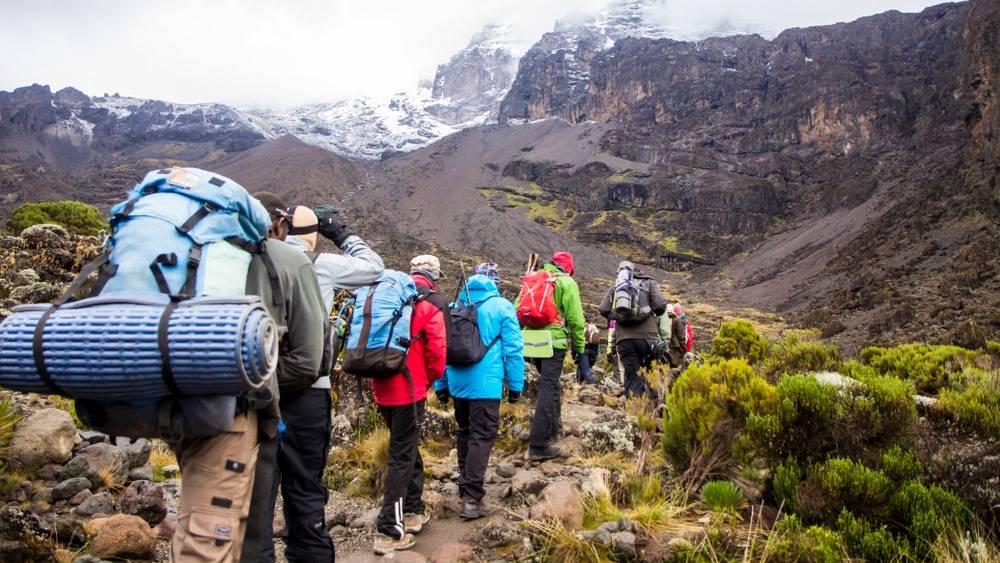
Ensuring a safe and successful climb Embarking on the journey to climb Mount Kilimanjaro is an exciting decision, but it’s essential to consider health and safety measures to ensure a safe and successful climb. While ascending the magnificent peak, you may encounter various challenges, including altitude-related health issues that can affect your progress. These issues arise due to the drastic change in altitude and climate as you trek higher, but with proper planning and precautions, you can conquer this mighty peak with ease. Common issues you may encounter Altitude sicknessAs you climb to higher altitudes, the air pressure and oxygen levels decrease, and your body may not adjust quickly enough. This can cause altitude sickness, which can range from mild to life-threatening. Symptoms include headaches, nausea, fatigue, and shortness of breath. Note: High altitudes can cause you to lose more fluids through breathing and sweating, leading to dehydration. This can also exacerbate altitude sickness symptoms. HypothermiaTemperatures on the mountain can drop significantly, especially at night. Hypothermia can set in if you don’t have adequate clothing or shelter, leading to dangerously low body temperatures. Sunburn While you Climb Mount Kilimanjaro you come in direct contact with SunUV light radiations, which causes genuine sunburn. So while trekking Mt. Kilimanjaro it is recommended to use +30 SPF sunscreen cream. Wearing a wide hat that covers your face and wearing UV protective shades with a sideboard are also recommended. Foot Problems Hindered fitting boots or new boots that have not been worn in will hurt feet, achieving misery and disturbing. So it is basic to wear a functional consolidate of footwear. The toenails should be kept short so they don’t rub or catch on your socks. If you develop sore, quickly empty the boot and treat it with zinc oxide tape or an unaffected plaster. Give yourself the best chance of scaling Mt. Kilimanjaro. Avail the good quality Kilimanjaro Packing List, find the Best Time To Visit Mount Kilimanjaro for the long trek, observe the principles of climb high/sleep low, hydrate generously, heed your guide and ‘pole pole’ your way up the mountain. In Summary At “Real Life Adventure Travel”, your safety is our top priority. We understand that climbing Mount Kilimanjaro is a thrilling adventure, but it’s important to us that you not only have an incredible experience but also return home in good health. That’s why we take every precaution and measure to ensure your safety during the climb. Trust us to make your Kilimanjaro adventure a safe and unforgettable experience! Related Articles Kilimanjaro Itineraries
Mt. Kilimanjaro Equipment & Gears
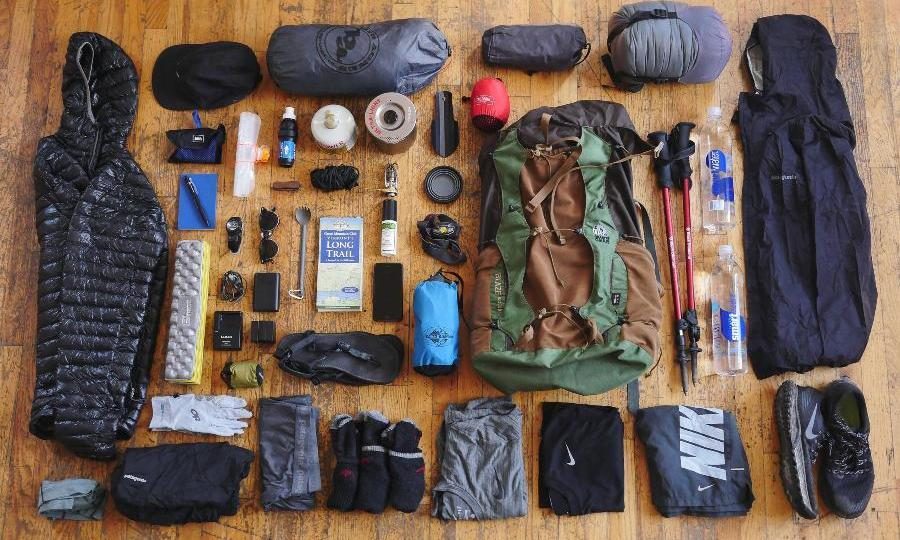
Mount Kilimanjaro packaging list Welcome to your Kilimanjaro adventure! To make sure you’re fully prepared, be sure to pack everything on the Mount Kilimanjaro Packing List. Missing something? Don’t worry, we’ve got you covered! RLAT offers the best prices around for renting mountain equipment/gear. Our equipment/gears are new and in the best condition to ensure a successful climb. Temperatures on Kilimanjaro can vary greatly, so it’s important to have the right clothing and equipment. Layering thin items that you can easily add or remove is the way to go. And don’t worry about overpacking – the National Park limits main equipment bags to 15kg per porter, which is plenty for your needs. We’ll weigh your bag before you start the climb to make sure everything is good to go. We can’t wait to see you conquer Kilimanjaro! What to wear and carry! HEAD WEAR Warm winter hat Neck gaiter or scarf – We recommend bringing a neck gaiter or bandana as it can get dust on Kilimanjaro Sun hat – Choose a hat that is wide-brimmed for protection Sunglasses – Choose a pair of high UV protection glasses as sun intensity above 4,500m is very high. Headlamp – You will need a headlamp with good light output for any late night toilet journeys, and importantly for summit night. We also recommend having extra batteries (AAA batteries) UPPER BODY The thermal base layer – 1 thermal base layer, ideally made from merino wool. Short-sleeved shirt – 2 lightweight, moisture-wicking short-sleeved shirts are sufficient. Long sleeve shirt – 2 or 3 light or medium weight, moisture wicking long sleeve shirts. Fleece or soft shell jacket – A mid-weight fleece jacket is ideal for Kilimanjaro Insulated jacket – A good quality and warm down or Primaloft jacket is required for the cold nights and summit push. Hard shell outer jacket – A windproof hard shell outer jacket to protect you from the elements Poncho – As Kilimanjaro, the weather is unpredictable then poncho is recommended. Leggings – 2 Thermal or fleece base layers for your legs Trekking trousers – 1 medium-weight trekking pair of trousers is recommended. Hard shell trousers – Windproof will protect you from the elements HAND AND FOOTWEAR Lightweight Gloves – We recommend this for the lowers slope Warm gloves or mittens – For the cold nights and for the summit we recommend heavyweight gloves Trekking boots – We recommend using a mid-weight trekking boot with good ankle support. We also recommend it to be waterproof Gym shoes/sandals – To wear around camp after a day’s trek. Socks – We recommend bringing 3-4 pairs of outer socks and 2-3 pairs of liner socks. We also recommend bringing one x thick thermal socks for summit night. Gaiters – We recommend this to keep your trousers clean from getting wet and muddy or dusty conditions. Micro-spikes/crampons – Not always required, but there are special periods when the mountain receives an excessive amount of ice near the summit. Accommodation Sun and lip screen – High sun protection factor sunscreen and lip protection balm is recommendedToothbrush and toothpaste Wet wipes and hand sanitizer Personal medicines and medical kit – Recommend bringing Paracetamol and Imodium at a minimum Extra bag – For your extra luggage that will remain at hotel Packing cubes – Useful for keeping items organized within your duffle bagCamera and spare batteries Plug Adapter – A plug adapter for charging your devices in the hotels before and after the trek. We recommend adapter type G. Personal snacks – Boiled sweets, nuts, energy bars, and dried fruit are all good for Kilimanjaro. Towel – lightweight, quick-dry Portable power bank and an extra one if possible Related Articles Kilimanjaro Itineraries
What to expect on Mt. Kilimanjaro
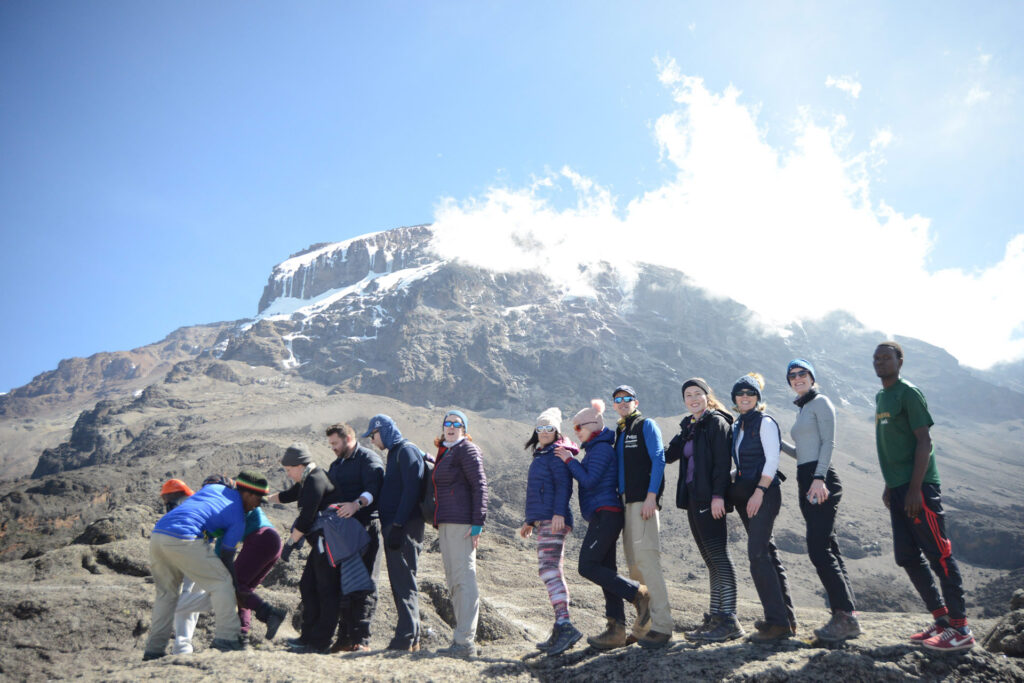
What Awaits You on Africa’s Tallest Peak Mount Kilimanjaro is an impressive natural wonder and a popular destination for adventure seekers. The Kilimanjaro Summit, commonly referred to as Uhuru Peak, is the highest point on the mountain and is reached by several established climbing routes. What to expect! Varying Climatic Conditions As you climb the mountain, you’ll encounter a range of climatic conditions, from warm and humid at the base to freezing temperatures at the summit. It’s essential to pack appropriate clothing and gear to stay comfortable and safe. Altitude Sickness As you climb higher, the air becomes thinner, making it harder for your body to absorb oxygen. This can cause altitude sickness, which can range from mild to life-threatening. It’s crucial to acclimatize properly and to be aware of the symptoms of altitude sickness. Physical and Mental Endurance Climbing Mount Kilimanjaro requires physical and mental endurance. The trek can take several days, and you’ll be hiking for several hours each day, often at high altitude. You’ll need to be physically fit and mentally prepared for the challenge. Accommodation The most popular routes on Mount Kilimanjaro have established campsites and huts for trekkers to rest and sleep. You can expect basic amenities such as sleeping bags, blankets, and pillows. However, you’ll need to bring your own toiletries and personal items. Stunning Scenery Despite the physical challenges, climbing Mount Kilimanjaro offers some of the most spectacular scenery in the world. From lush rainforests to alpine deserts and snow-capped peaks, you’ll be rewarded with breathtaking views at every turn. Experienced Guides Climbing Mount Kilimanjaro is a guided trek, and it’s essential to choose a reputable guide or tour operator. Don’t worry, we’ve got you covered. Our experienced guides can help you acclimatize, navigate the terrain, and provide valuable support and encouragement along the way. In summary Climbing Mount Kilimanjaro is a challenging but rewarding experience that requires careful preparation and planning. You can expect varying climatic conditions, altitude sickness, physical and mental endurance, basic accommodation, stunning scenery, and experienced guides to support you on your journey to the summit. Related Articles Kilimanjaro Itineraries
Best time to climb Mt. Kilimanjaro
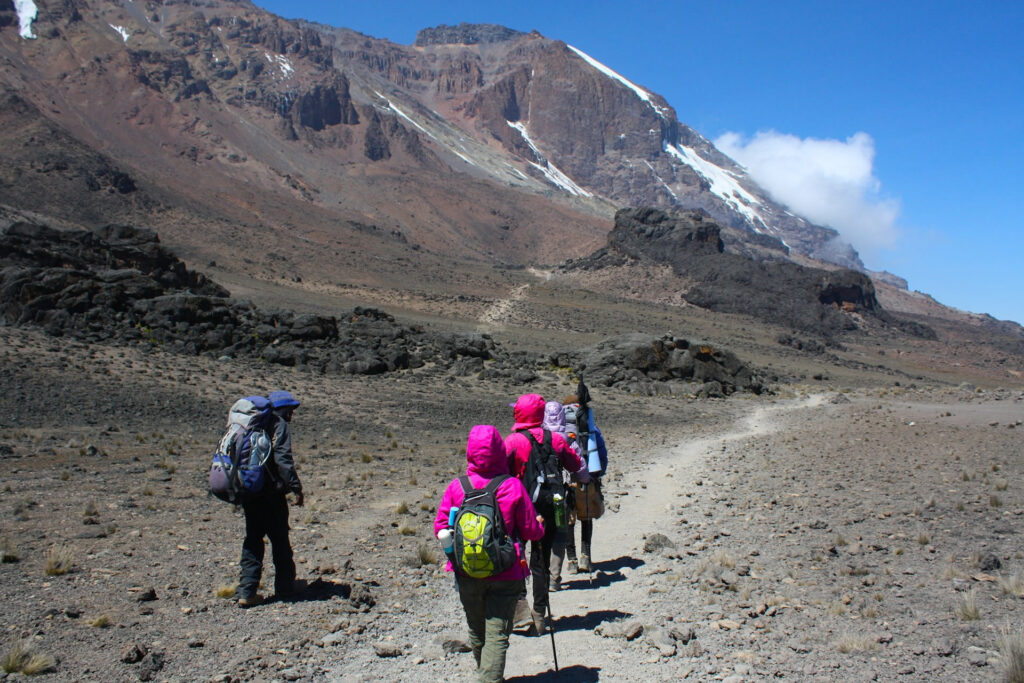
Mt. Kilimanjaro Weather Are you ready for the adventure of a lifetime? Scaling Mount Kilimanjaro is an incredible feat, but the weather conditions can make or break your climb. Don’t leave your success to chance – choosing the best time to climb is essential! Let’s face it, bad weather on Kilimanjaro can ruin your entire climb, and no one wants to slog through deep mud or fight their way through ice and snow. But fear not, we have the insider knowledge on the best time to climb. Located near the equator, Kilimanjaro only experiences two seasons – the dry and wet seasons. Climbing during the wet season can be tough, with fog, drizzle, and moisture seeping into your clothes and gear. But wait, there’s good news! The dry season is the perfect time to attempt the climb, with clear skies and moderate temperatures. We know that choosing the best time to climb can be a daunting task, but we’re here to help. With our expert guidance, you’ll be able to plan your climb with confidence. So, what are you waiting for? Book your climb during the dry season and make the summit a reality! Best time to go! January to mid-March This is an ideal time to climb, with mild weather conditions and fewer crowds. You’ll experience mostly dry days with clear skies and occasional brief showers. However, keep in mind that the chances of rain increase as you approach the long rainy season in March. But what if you can’t climb during the optimal period? Don’t worry, we’ve got you covered. Consider taking the Rongai Route, which is much drier and less crowded than other routes. And speaking of crowds, if you want to avoid them and enjoy the best weather, opt for the Rongai, Shira, or Lemosho routes instead of the overcrowded Machame and Marangu routes. One thing to note is that the temperatures on Kilimanjaro can be vastly different during the day and night, so it’s always best to prepare for the worst-case scenario, but don’t let that deter you. With proper planning and guidance, your climb up Mount Kilimanjaro can be an unforgettable experience. Contact us to help you plan your Kilimanjaro climb and conquer the highest peak in Africa! April – June The main rainy season lasts from the end of March through to mid-June. As elsewhere in the world, when exactly it rains and when it stops is impossible to predict. It’s the warmest time of the year in Tanzania, but those months are so wet that many operators simply do not offer climbs in April/May at all. June – August The rain gradually decreases, and so do the temperatures on Kilimanjaro. The weather on Kilimanjaro is fairly dry and clear but the nights will be bitter cold. June is quiet, but the number of climbers increases as the year progresses. August – October August and even more so September is the peak climbing season on Kilimanjaro. The weather is good with many clear days and warmer than in June/July. You may, however, get clouds blanketing the forest/moorland zone, and on the southern routes you may get rained on on the first days. But once you leave the rain forest behind all is good! The good conditions last into about mid-October when the buildup for the short rains begins. October/November The weather on Kilimanjaro becomes more unstable and the number of climbers drops. As in all tropical regions of the world, the wetter time of the year announces itself with afternoon clouds and occasional thunderstorms. As long as you are equipped to withstand the occasional shower, this should not present any major problems. November/December November is the small rainy season, and the rain lasts into mid-December. The temperatures have dropped and the rain brings with it all the hazards that I described at the top of the page. Not the best time to climb Kilimanjaro. December/January The four to six weeks around Christmas and New Year are the second peak climbing season on Kilimanjaro. Traffic is extremely high despite there still being a good chance of rainfall and thick clouds in the lower regions. It’s not a time I would choose. Related Articles Kilimanjaro Itineraries
